 |
||||
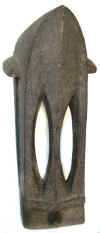 |
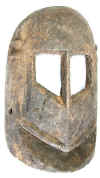 |
|
 |
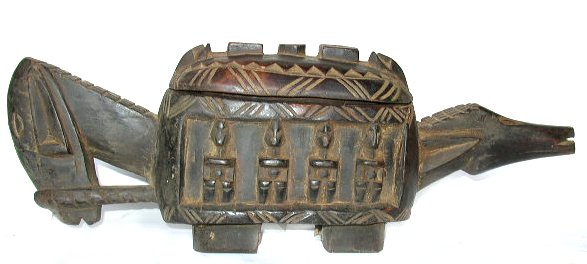 |
 |
 |
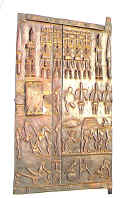 |
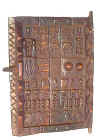 |
 |
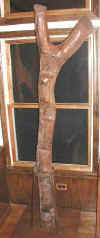 |
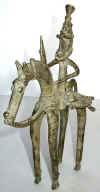 |
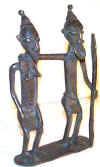 |
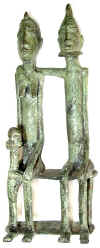 |
 |
 |
 |
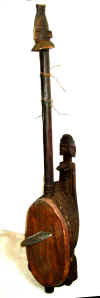 |
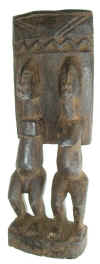 |
 |
TRIBAL AFRICAN ART
DOGON (DOGO, DOGOM, HABBE, HABE, KADO, KADDO, KIBISI, TOMBO)
Mali, Burkina Faso
The 400,000 Dogon
live 180 miles south of Timbuktu on the cliffs of Bandiagara, which dominate the plains
for over 150 miles. They speak approximately 120 dialects, many of which are not mutually
comprehensible. At first hunters, now on their small fields they cultivate millet,
sorghum, wheat, and onion. The millet is stored in high quadrangular granaries around
which they build their houses. Because of the difficult approach to these regions and the
aridity of the climate, the Dogon have been isolated and hence were able to conserve their
ancient religious habits and ways of making the necessary implements, their carvings.
Dogon social and religious organizations are closely interlinked and out of this arose principal cults, which accounts for the richness and diversity of Dogon culture and art. The clans are subdivided onto lineages, overseen by the patriarch, guardian of the clan’s ancestral shrine and officiant at the totemic animal cult. Beside this hierarchical system of consanguinity, male and female associations are entrusted with the initiations that take place by age group, corresponding to groups of newly circumcised or excised boys or girls. The Dogon believe these operations remove the female element from males and vice versa. Circumcision thus creates a wholly male or female person prepared to assume an adult role. The members of an age group owe one another assistance until the day they die. Initiation of boys begins after their circumcision, with the teaching of the myths annotated by drawings and paintings. The young boys will learn the place of humans in nature, society, and the universe. In the Dogon pantheon Amma appears as the original creator of all the forces of the universe and of his descendant Lebe, the god of plant rebirth. The first Dogon primordial ancestors, called Nommo, were bisexual water gods. They were created in heaven by the creator god Amma and descended from heaven to earth in an ark. The Nommo founded the eight Dogon lineages and introduced weaving, smithing, and agriculture to their human descendants.
For
these various cults the hogon is both priest and political chief of the village.
He is also in
charge of the cult of lebe, the mythical serpent. Assisted by the blacksmith, he
presides over agrarian ceremonies. The
smiths and woodcarvers, who form a separate caste, transmit their profession by heredity.
They may only marry within their own caste. Women are in charge of pottery making.
Dogon
art is extremely versatile, although common stylistic characteristics – such as a
tendency towards stylization – are apparent on the statues. Their art deals with the
myths whose complex ensemble regulates the life of the individual. The sculptures are
preserved in innumerable sites of worship, personal or family altars, altars for rain,
altars to protect hunters, in market. As a general characterization of Dogon statues, one
could say that they render the human body in a simplified way, reducing it to its
essentials. Some are extremely elongated with emphasis on geometric forms. The subjective
impression is one of immobility with a mysterious sense of a solemn gravity and serene
majesty, although conveying at the same time a latent movement. Dogon sculpture recreates
the hermaphroditic silhouettes of the Tellem, featuring raised arms and a thick patina
made of blood and millet beer. The four Nommo couples, the mythical ancestors born of the
god Amma, ornament stools, pillars or men’s meeting houses, door locks, and granary
doors. The primordial couple is represented sitting on a stool, the base of which depicts
the earth while the upper surface represents the sky; the two are interconnected by the
Nommo. The seated female figures, their hands on their abdomen, are linked to the
fertility cult, incarnating the first ancestor who died in childbirth, and are the object
of offerings of food and sacrifices by women who are expecting a child. Kneeling statues
of protective spirits are placed at the head of the dead to absorb their spiritual
strength and to be their intermediaries with the world of the dead, into which they
accompany the deceased before once again being placed on the shrines of the ancestors.
Horsemen are remainders of the fact that, according to myth, the horse was the first
animal present on earth. The Dogon style has evolved into a kind of cubism: ovoid head,
squared shoulders, tapered extremities, pointed breasts, forearms, and thighs on a
parallel plane, hairdos stylized by three or four incised lines. Dogon sculptures serve as
a physical medium in initiations and as an explanation of the world. They serve to
transmit an understanding to the initiated, who will decipher the statue according to the
level of their knowledge. Carved animal figures, such as dogs and ostriches, are placed on
village foundation altars to commemorate sacrificed animals, while granary doors, stools
and house posts are also adorned with figures and symbols.
There are
nearly eighty styles of masks, but their basic characteristic is great boldness in the use
of geometric shapes, independent of the various animals they are supposed to represent.
The structure of a large number of masks is based on the interplay of vertical and
horizontal lines and shapes. Another large group has triangular, conic shapes. All masks have large geometric eyes and stylized features. The masks are often polychrome, but on many the color is lost;
after the ceremonies they were left on the ground and quickly deteriorated because of
termites and other conditions. The Dogon continue an
ancient masquerading tradition, which commemorates the origin of death. According to their
myths, death came into the world as a result of primeval man’s transgressions against
the divine order. Dama memorial ceremonies are held to accompany the dead
into the ancestral realm and restore order to the universe. The performance of
masqueraders – sometimes as many as 400 – at these ceremonies is considered
absolutely necessary. In the case of the dama, the timing, types of masks
involved, and other ritual elements are often specific to one or two villages and may not
resemble those seen in locations only several miles distant. The masks also appear during baga-bundo
rites performed by small numbers of masqueraders before the burial of a male Dogon. Dogon
masks evoke the form of animals associated with their mythology, yet their significance is
only understood by the highest ranking cult members whose role is to explain the meaning
of each mask to a captivated audience.